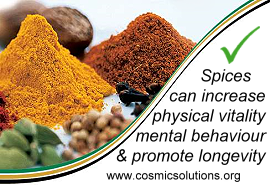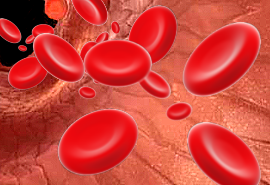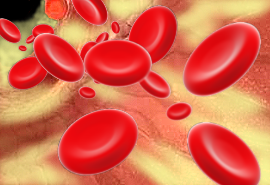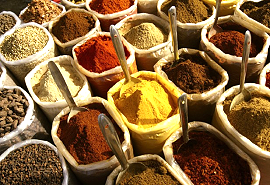Herbs and Spices
Preventative Agents Against Cardiovascular Disease and Stroke

Although the best heart herbs and spices for cardiovascular disease and stroke are bay leaf, caper, cloves, garlic, ginger, mustard, oregano and thyme, most culinary herbs and spices have protective effects against these diseases.
Atherosclerosis, the underlying cause of cardiovascular disease, is characterised by the deposition of cholesterol plaques in the lining of the arteries that may rupture and result in a heart attack or stroke.
Cardiovascular disease is associated with a range of factors including raised cholesterol and triglyceride levels, high blood pressure, sticky platelets, obesity, smoking, diabetes and chronic systemic inflammation.
Herbs and spices are powerful preventative agents against cardiovascular disease, as they modify most risk factors as well as other illnesses and pathological processes associated with this condition.
Risk Factors for Cardiovascular Disease and Stroke
Cardiovascular disease is associated with a wide range of lifestyle and other risk factors.
The most important of these are elevated cholesterol and triglyceride levels, high blood pressure, sticky platelets, smoking, obesity, raised homocysteine levels, genetic predisposition, and related illnesses such as diabetes.
To complicate matters, many of these factors are interlinked and exacerbate one other. Smoking, for instance, also raises blood pressure - obesity increases the chances of developing diabetes and high blood lipid levels, both of which are also associated with a genetic predisposition to these conditions.
Aging on its own and, more so, when associated with weight gain and reduced exercise, is also a major risk factor.
Cholesterol and other Blood Lipids
High blood lipid levels are among the most important of the risk factors associated with cardiovascular disease. Normally cholesterol plays a central role in the production of several crucial hormones and is an important component of cell walls.
Similarly triglycerides are not dangerous as long as their blood levels remain normal, and it is only in excess that these lipids become threats to our health. Raised levels of cholesterol and triglycerides, as well as imbalances in their lipoprotein carrier proteins, have all been directly implicated as major risk factors underlying cardiovascular disease. These lipid imbalances can, in turn, be caused by a number of factors, including genetic predisposition, high dietary fat intake and liver disease.

Of the blood lipids, cholesterol (a major constituent of atheromatous plaques) is the one most closely linked to cardiovascular disease.
Blood levels of cholesterol may become abnormally high for a number of reasons. Usually the imbalance can be attributed to either a genetic predisposition or a diet high in saturated fats commonly found in animal products.
Once ingested, dietary cholesterol is broken down in the intestines and then re-synthesized in the liver before being released into the blood stream.
Although the cholesterol in our blood is not exactly the same as that found in the food that we eat, an excessive dietary intake may increase the risk of high blood cholesterol levels. Irrespective of whether diet or genes are ultimately responsible, high levels of cholesterol and other lipids dramatically increase the risk of cardiovascular disease.
Blood lipid imbalances contribute directly to the development of atherosclerosis which, in turn, can lead to a heart attack or stroke.
Atheromatous Plaque Formation
The deposition of cholesterol and triglycerides in the arteries is the fundamental process underlying the development of atherosclerosis. As these lipids are insoluble in water, they need to be transported in the blood by water-soluble lipoprotein carrier molecules.
The most important of these “molecular suitcases” are low density lipoprotein (LDL) and high density lipoprotein (HDL) which shuttle cholesterol and triglyceride back and forth between the liver and other tissues.
HDL and LDL are both cholesterol transporters, but they have different functions. LDL carries cholesterol to the tissues and arteries, whereas the HDL carries cholesterol back from these areas to be processed by the liver and excreted in the bile.
Chronic Systemic Inflammation
Atheromatous plaque formation is associated with an inflammatory process involving the oxidation of LDL cholesterol. The mechanism underlying this process is currently under intensive investigation and is thought to be associated with a low grade pathological state called chronic systemic inflammation.
Spices like garlic, ginger, oregano, rosemary, thyme and others contain anti-inflammatory phytonutrients that inhibit this abnormal inflammatory condition.
Antioxidants present in most spices also play a major role in preventing the oxidation of LDL cholesterol.
Atherosclerosis

The principal cause of heart attack and thrombotic stroke is atherosclerosis-related pathology. If an atheromatous plaque ruptures into a coronary or cerebral artery, it may block the blood flow to parts of the heart or brain, respectively.
The oxygen starvation associated with the reduced blood flow is responsible for the often lethal damage that occurs during these events.
Although the precise mechanisms associated with the development of atherosclerosis have not been fully elucidated, some of these processes, and their associated risk factors, are well understood.
Its formation typically begins during the teenage years, but the process may be accelerated by poor lifestyle habits. In Western countries today it is not unusual for atherosclerosis to start in young children, resulting in these unfortunate individuals developing the symptoms of cardiovascular disease in early adulthood.
Consisting mainly of calcified, cholesterol compounds, atheromatous plaques cause a gradual narrowing and hardening of the arteries.
This restricts blood flow to tissues, and places extra strain on the heart which has to work harder to pump blood through stiff, narrow blood vessels. Once the plaques occlude more than 50 percent of the lumen of the arteries, cardiovascular disease begins to manifest itself in the form of angina, heart attack and stroke.
Sticky Platelets
The risk of a heart attack or stroke resulting from atherosclerosis is increased in the presence of sticky platelets. Platelets are small cells found in the blood that are involved in the inflammatory response. They are also crucial components of blood clots that help to control bleeding by sticking to one another and, in so doing, help to contain bleeding from damaged blood vessels.
Platelets can, however, become a health liability if they are too 'sticky' and adhere to one another even when there is no bleeding. If this abnormal aggregation involves a significant number of platelets, a clot may develop.
Clot formation may also be precipitated by the rupture of an atheromatous plaque into the lumen of a blood vessel. The more 'sticky' the platelets are, the more likely they are to aggregate on the ruptured plaque.
Heart Attack and Thrombotic Stroke
Over time, cholesterol and calcium continue to be deposited in the artery walls, causing the blood vessels to narrow thereby reducing the flow of blood to the tissues.
As they grow in size, the atheromatous plaques become unstable and may rupture into the lumen of an artery, causing permanent blockage to the blood supply.
Plaque rupture stimulates platelet aggregation and clot formation at the site of the plaque, and this causes further narrowing of the vessel and aggravation of the already impeded blood flow.
This process occurring in a coronary artery is the fundamental cause of a heart attack. The same event taking place in a cerebral artery may cause a thrombotic stroke, either by blocking an artery at the point of rupture, or by causing a blockage elsewhere in the brain after a piece of the clot becomes dislodged and travels to a smaller, more distant, blood vessel.
Herb and Spice Compounds Fight Cardiovascular Disorders

Cinnamon is renowned for its ability to improve pancreas functions to control blood sugar levels. Whilst cinnamon has anti-bacterial, anti-fungal and anti-cancer properties, it has also been found to be beneficial for improving digestion, lowering cholesterol, boosting brain function and memory. Cinnamon contains many phytochemicals such as eugenol, cinnulin, cinnamic acid, cinnamalydehyde, and several other compounds, that are responsible for its potency.
Fenugreek has been studied for its cardiovascular benefits and lowering of blood glucose levels. Researchers found that individuals who consumed 56 grams of fenugreek seed per day had significantly lower cholesterol levels after just 24 weeks, and had lowered their risk of heart attack by more than 25 percent. The same study showed that participants with type 2 diabetes had considerably lower blood sugar levels after eating fenugreek. Fenugreek’s potent compounds reduce cholesterol, improve kidney function, prevent heart attack and lower blood pressure as well as blood sugar. As fenugreek can lower blood sugar levels, it is wise to seek medical advice before combining it with diabetes medications.
Ginger comes from the same family as turmeric and therefore shares many of its potent properties. Ginger has anti-viral, anti-inflammatory qualities, can lower cholesterol, improve circulation, and stimulate digestion. Research indicates that ginger is beneficial to the whole cardiovascular system, and clinical studies have shown that as little as 5 grams of dried ginger a day reduces the production of triglycerides and LDL (bad) cholesterol in the liver. Ginger protects against heart attack and stroke by preventing platelet clumping or stickiness that may eventually lead to blood clots and atherosclerosis. Ginger contains gingerols, along with many other constituents, that are responsible for its many benefits.
Rosemary contains potent antioxidants such as carnosol, carnosic acid, and rosmarinic acid, along with many other elements, but these three are the most prevailing. Just like the two other culinary herbs, sage and thyme, rosemary contains phytochemicals that assist in the protection and depletion of acetylcholine, a neurotransmitter that is vital to proper brain function. Rosemary also has the potential to protect the brain from oxidation and increases blood flow (actions that may help avoid stroke, or slow the development of Alzheimer's). As the brain controls healthy heart function, adding rosemary to your diet may also result in better cardiac muscle function. The phytochemicals and antioxidants in rosemary can also be absorbed through the skin when applied topically.
Turmeric is one of the most researched spices relating to undeniable cardiovascular system protection. One of the constituents found in turmeric is curcumin, and has so far proven to be a very effective compound for fighting tumor growth, and reducing excess platelet aggregation that occurs in sticky, clot-forming blood. Curcumin is a potent antioxidant, anti-inflammatory, anti-cancer agent, and also assists in keeping NF-kappa B in order. NF-kappa B is a protein complex involved in the body's inflammatory responses - Elevated NF-kappa B production has been linked to various types of cancer as well as autoimmune disease. Turmeric also maintains homocysteine levels, and improves the cleansing capability of the liver, allowing it to expel excess LDL cholesterol, therefore reducing the risk of heart disease.
Herbs & Spices - Dietary Benefits
Herbs & Spices - Cancer & DNA Damage Prevention
Essential Anti Cancer and Cardio Protective - Herbs and Spices [long index]
Sitemap Menu
Associates
- Getting Healthy Staying Healthy
Get Motivated and Live Life Now - Deakin Better Health Channel
The Medicinal and Health Benefits - Global Health Information
Promoting Healthier Choices
Herbs & Spices
Black pepper is derived from the fruit of a climbing vine native to southern India and Sri Lanka. White pepper is likewise made from this fruit but is processed differently. By increasing the bioavailability of other anti-tumourigenic spices such as turmeric, black pepper dramatically increases their potency and effectiveness against various types of cancer.
It also counteracts cancer development directly. Its principal phytochemical, piperine, inhibits some of the pro-inflammatory cytokines that are produced by tumour cells."
Cinnamon is a spice obtained from the bark of Cinnamomum zeylanicum, a tree that is indigenous to Sri Lanka and now cultivated in several other tropical countries too. Cinnamon is a powerful inducer of insulin sensitivity making it an effective treatment for both Type II diabetes and metabolic syndrome.
It has also been used as a traditional medicine to treat a variety of ailments including colds and digestive problems, as a perfume, and for flavouring wines."
It benefits both liver and gall bladder in their vital role of handling fats within the body and aiding the detoxifying role of the liver. It is, therefore, useful in the disorders of these organs. Combined with the juice of watercress and with a diet without meat or much sugar and starch, it helps to make the liver and the gall bladder normal, and exercises a beneficial effect upon the nervous system.
Sufferers from hepatitis can generally benefit from dandelion tea."
In traditional medicine, it has been used to treat a number of conditions including diabetes, sore throats, and in poultices used to treat sores and abscesses. Recent investigations into the medicinal properties of this spice suggest it is important not only as a preventive for chronic diseases such as diabetes, but also for enhancing normal physiological processes, especially with respect to athletic performance.
Another one of its properties is the reduction of platelet aggregation which, in turn, dramatically reduces the risk of abnormal blood clotting associated with heart attacks and strokes."
Garlic, which is the bulb of a plant native to the Himalayas and Siberia, is among the world's most important spices. Used across the globe as pungent food flavouring, in many societies it is employed as an important medicinal spice with an array of traditional uses.
These include its use as an antiseptic, anti-asthmatic, anti-rheumatic and as a treatment for coughs and colds. Over the centuries, it has also been employed against specific disease scourges, notably leprosy, plague and smallpox."
Ginger is one of the most popular of all the spices and is derived from the root of a plant indigenous to Asia which is now cultivated across the globe for use in an enormous variety of foods, drinks and traditional medicines. It is used in folk medicine to treat colds and influenza and is an effective anti-emetic used in the treatment of both motion sickness, and the nausea and vomiting associated with pregnancy.
Numerous studies investigating ginger's medicinal properties have also shown it to be effective in the prevention and treatment of many of our more serious chronic degenerative diseases."
Mustard is native to the Mediterranean region is derived from several varieties of mustard plant, each of which produces seeds of a different intensity and flavour. Not only do they help to protect against a variety of malignancies, including cancer of the pancreas, prostate, breast, stomach and colon, but as little as two or three servings per month may be enough for their anticancer properties to take effect.
In addition to being valued internationally as a spice, it has a notable history of use in traditional medicines and has been used to relieve headaches, as an emetic, for colds and flu and to treat arthritis."
Nutmeg is the seed, and mace the aril, of a tree native to Indonesia. It provides several important antioxidants, including eugenol which inhibits platelet aggregation and oleanolic acid which can lower blood lipids and therefore help to prevent cardiovascular disease. Nutmeg also contains limonene which has preventive properties against some cancers, and linalool which has anticancer and antiviral effects.
In high doses it has narcotic effects and can induce hallucinations."
Turmeric's root is ground up to provide the yellow dye and flavoured powder known as haldi in India, and turmeric in the West. Turmeric's main constituent phytochemical, curcumin, is one of the most remarkable and most studied of all the spice compounds. In addition to its other medicinal properties, curcumin is an extremely valuable chemoprotective agent.
Much of the research and interest in curcumin has centred on breast cancer, but it has also been found to have protective effects against cancers of the bladder, stomach, uterus and cervix."
